《THE INTERNATIONAL REGIME OF RIVER NAVIGATION》
| 作者 | 编者 |
|---|---|
| 出版 | SIJTOFF & NOORDHOFF |
| 参考页数 | 441 |
| 出版时间 | 1979(求助前请核对) 目录预览 |
| ISBN号 | 9028605290 — 求助条款 |
| PDF编号 | 812893868(仅供预览,未存储实际文件) |
| 求助格式 | 扫描PDF(若分多册发行,每次仅能受理1册) |
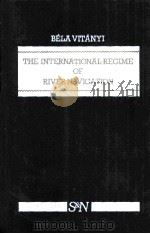
Introduction1
1.Basic concepts.The delimitation of the subject-matter of our study1
2.The field of application of the regime of river navigation with respect to that of maritime navigation6
Notes11
Part Ⅰ.The Foundations of the International Regime of River Navigation19
Chapter 1 The Genesis of the Treaties of 1814/1519
1.The idea of innocent passage in the theory of the law of nature19
1.1.The notion of innocent passage ensuing from the law of nature19
1.2.The reduction of the right of innocent passage to a moral obligation23
2.The situation of river navigation under the "ancien regime"26
3.The application of the concept of international servitude to pluriterritorial rivers and the idea of community of riparians30
3.1.The servitude of passage in favour of upstream States30
3.2.The idea of community of riparians31
3.3.The first treaty applications of the theories on the freedom of navigation33
Notes38
Chapter 2 The Treaties of 1814/1547
1.The declaration on freedom of navigation contained in the first Peace Treaty of Paris47
2.The inquiry into the intentions of the Contracting Parties50
3.The proceedings of the Special Committee of the Congress of Vienna52
4.The general characteristics of the regulation of 181556
4.1.The legal status of riparian States56
4.2.The legal status of non-riparian States59
5.The question of the normative character of the Vienna regulations61
Notes69
Part Ⅱ.The Beneficiaries of the Right of Navigation75
Chapter 3 Treaty Regulations75
1.The legal situation established by the Act of Vienna75
2.The gradual extension of the category of beneficiaries78
2.1.The first navigation acts based on the Act of Vienna78
2.2.The regulation of navigation on the Danube and the Rhine81
3.The influence of the Act of Vienna on the regime of navigation of the rivers of other continents88
3.1.The question of free navigation on rivers in America88
3.2.Regulations concerning river navigation in Africa and in Asia.98
4.The regime of navigation under the Peace Treaties of 1919/20 and the Statute of Barcelona of 1921100
5.Trends and legal problems after World War Ⅱ108
Notes114
Chapter 4 The Question of the Existence of a Rule of Customary Law providing for Freedom of Navigation on Pluriterritorial Rivers129
1.The approach to the problem from the side of the law of nature129
2.The effect of treaty provisions in favour of non-signatory States131
3.An analysis of the process of formation of a rule of customary law in this matter134
4.An attempt to define the existing legal situation139
Notes143
Part Ⅲ.The Territorial Scope of the International Regime of River Navigation149
Chapter 5 Watercourses Subject to an International Regime149
1.The concept of "international river"149
2.The attempt to revise the traditional concept at the Conference of Barcelona154
3.The question of navigability159
3.1.Natural navigability159
3.2.Artificial navigability160
3.3.The role of transhipment162
4.Geographical limits to the scope of the international regime164
4.1.The upstream limit164
4.2.The downstream limit167
5.Affluents and branches174
5.1.The principle of individuality of affluents174
5.2.The principle of unity of the navigable parts of river systems176
Notes179
Chapter 6.Other Problems Connected with Application of International Regulations in this Matter187
1.Canals187
2.Intermediary waters191
3.Internal(national)navigable waterways195
3.1.Definition195
3.2.Attempts to abolish the distinction between international and national waterways196
3.3.Treaty provisions relating to internal navigable waterways199
4.The concept of international drainage basin203
4.1.The origin of the problem203
4.2.The development of the theory of treatment of a river basin as an integrated whole205
4.3.The conventional applications of the basin concept208
4.4.The studies of the International Law Commission209
5.Termination of the international character of a waterway210
Notes212
Part Ⅳ.The Substantive Law of the Free Navigation of Rivers219
Chapter 7 The Basic Content of the Regime of Free Navigation219
1.The powers and duties of the riparian States219
1.1.The powers of the riparian States relating to international waterways219
A.Powers exercised in common219
B.The manifestations of the sovereignty of the individual riparian States223
1.2.The elements of the regime of free navigation231
2.The freedom of traffic235
2.1.The regulation by the Congress of Vienna235
2.2.The development of the application of the various aspects of the freedom of traffic236
A.Developments prior to World War Ⅰ236
B.Relevant rules of the Peace Treaties of 1919/20,the Statute of Barcelona,and subsequent conventions240
2.3.Conclusions on the generally accepted scope of the freedom of traffic on international waterways245
3.The freedom of the shipping trade247
3.1.The right of transporting goods and passengers247
3.2.The meaning of freedom of commerce in relation to free navigation249
A.Bodies of opinion249
B.Analysis of the conclusions of the Permanent Court of International Justice in the Oscar Chinn Case250
C.Criticism of the Court's attitude253
Notes257
Chapter 8 The Question of Reservation of Local Transport(Cabotage)264
1.The exposition of the problem264
1.1.The meaning of "cabotage" and 'local transport"264
1.2.The rule of equal freedom of transport operations of different territorial extent266
2.The reservation of local transports as an exception to the rule270
2.1.The emergence of the clause on reservation270
2.2.Relevant rules of the Peace Treaties of 1919/20 and the Statute of Barcelona275
2.3.Developments after 1945282
Notes287
Chapter 9 Complementary Elements of the Regime of Free Navigation294
1.The freedom of freight294
1.1.The origins of the idea of the freedom of affreightment294
1.2.The concept of economic liberalism296
1.3.The problem of State intervention in river affreightment297
1.4.The regulation of the carrying capacity on the Rhine302
2.The dues,tolls,and charges on navigation305
2.1.The development of the idea of gratuitous use of waterways305
2.2.The process of abolition of dues based on the sole fact of navigation;maintenance of duties for services rendered to navigation307
A.Developments prior to World War Ⅰ307
B.Relevant rules of the Peace Treaties of 1919/20,the Statute of Barcelona,and subsequent conventions311
2.3.Summary of the general rules on charges316
3.Equality of treatment317
3.1.The application of the principle of equality of treatment to navigation on international waterways as dealt with in international treaties317
3.2.The question of unlawful discrimination324
3.3.The prohibition of discrimination between different routes of transport to the prejudice of transport by river327
3.4.Conclusions resulting from the application of the principle of equality of treatment to navigation on international waterways331
Notes332
Chapter 10 The Obligations Incumbent upon Riparian States with Regard to the Use and the Maintenance of the Navigability of International Waterways338
1.General obligations338
1.1.In respect of change of the natural flow of the waters338
1.2.In respect of the use of waters for economic purposes342
2.The obligation of riparians concerning the maintenance of navigability348
2.1.Regulation prior to World War Ⅰ of the obligation of riparians for the upkeep of the channels of international waterways348
2.2.The obligation of riparians to execute hydrotechnic works,in the Peace Treaties of 1919/20,the Statute of Barcelona,and subsequent conventions355
2.3.The question of priority between different uses of pluriterritorial rivers363
3.Synthesis of the obligations368
Notes371
Treaties380
Index of Names392
General Index396
About the author440
1979《THE INTERNATIONAL REGIME OF RIVER NAVIGATION》由于是年代较久的资料都绝版了,几乎不可能购买到实物。如果大家为了学习确实需要,可向博主求助其电子版PDF文件(由 1979 SIJTOFF & NOORDHOFF 出版的版本) 。对合法合规的求助,我会当即受理并将下载地址发送给你。
高度相关资料
-

- THE LEGAL REGIME OF HYDROSPACE
- 1971 STEVENS & SONS
-

- XIXth International Navigation Congress
- 1957 LONDRES-LONDON
-
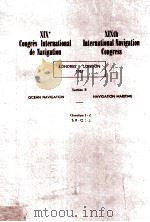
- XIXth International Navigation Congress
- 1957 LONDON-LONDRES
-
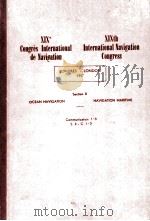
- XIXth International Navigation Congress
- 1957 LONDON-LONDRES
-
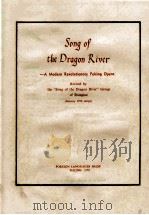
- SONG OF THE DRAGON RIVER
- 1972 FOREIGN LANGUAGES PRESS
-

- THE LAW OF THE SEA:STRAITS USED FOR INTERNATIONAL NAVIGATION VOLUME Ⅰ
- 1992 UNITED NATIONS
-

- REGIME INTERNATIONAL DE LA PROPRIETE INDUSTRIELLE
- 1911 ALLER FRERES
-

- HILO RAINS
- 1988 BAMBOO RIDGE PRESS
-

- THE RIVER OF DIAMONDS
- 1964 FONTANA BOOKS
-
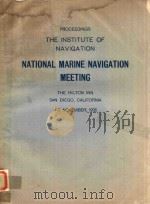
- PROCEEDINGS THE INSTITUTE OF NAVIGATION NATIONAL MARINE NAVIGATION MEETING 1976
- 1976 THE INSTITUTE OF NAVIGATION
-

- SONG OF THE CHANG RIVER
- 1958 SUPPLEMENT TO CHINA RECONSTRUCTS
-
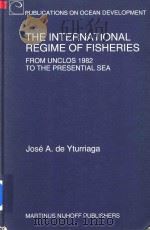
- The International Regime of Fisheries From UNCLOS 1982 to the Presential Sea
- 1997 Martinus Nijhoff Pubishers
-

- ИССЛЕДОВАНИЯ ДАЛЬНЕВОСТОЧНЫХ МОРЕЙ V
- 1958 ИЗДАТЕЛЬСТВО АКАДЕМИИ НАУК СССР
提示:百度云已更名为百度网盘(百度盘),天翼云盘、微盘下载地址……暂未提供。➥ PDF文字可复制化或转WORD

